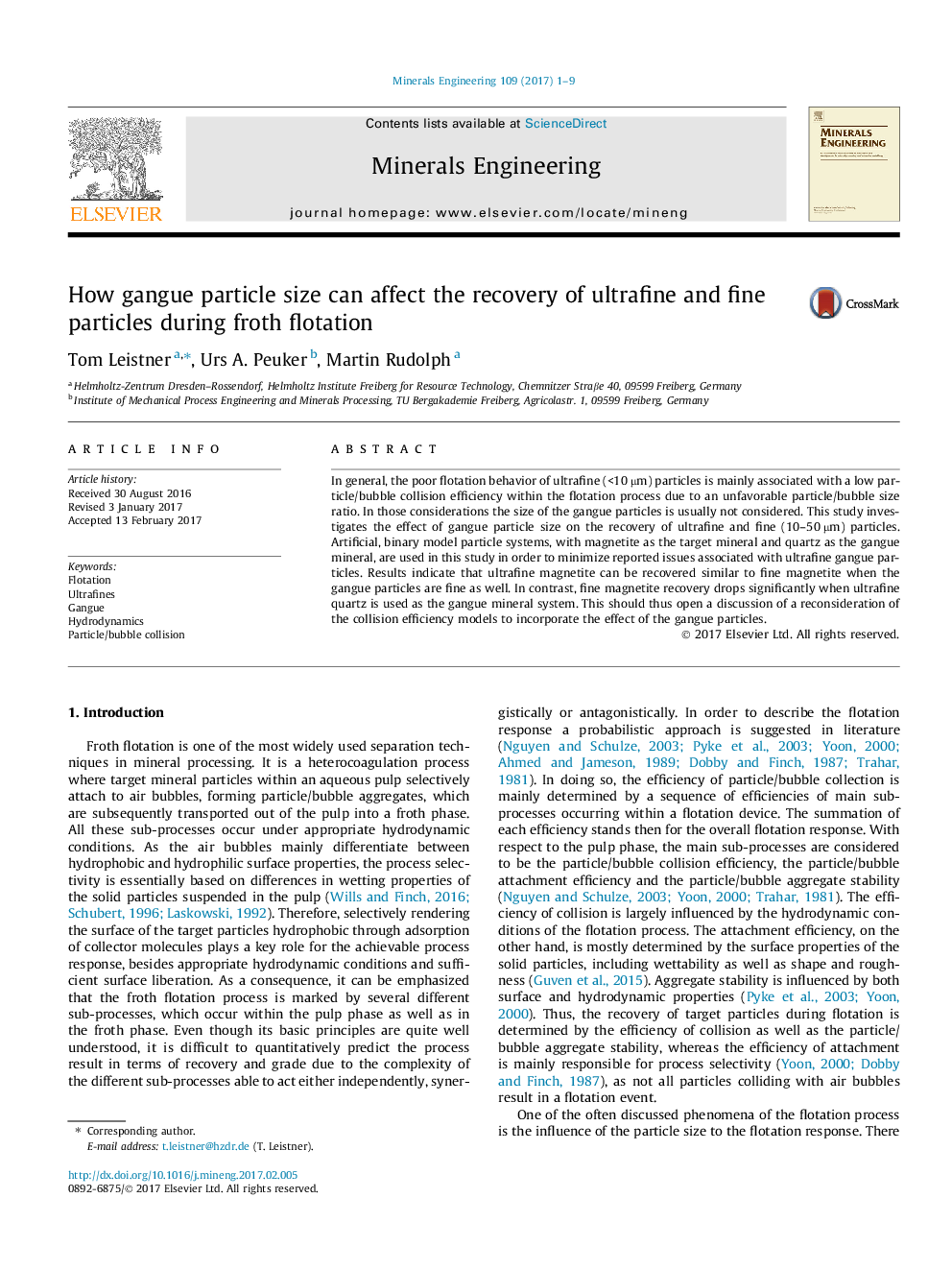| Article ID | Journal | Published Year | Pages | File Type |
|---|---|---|---|---|
| 6477778 | Minerals Engineering | 2017 | 9 Pages |
â¢Particle size-dependent flotation recoveries are studied with respect to gangue particle size.â¢Artificial, binary model systems (magnetite and quartz) are used as feed material.â¢Ultrafine particles are recovered like fine particles if the gangue particles are fine.â¢Fine particles are less efficiently recovered if ultrafine gangue particles are present.â¢Ultrafine hydrophilic particles suppressively affect bubble/particle collision efficiency.
In general, the poor flotation behavior of ultrafine (<10 µm) particles is mainly associated with a low particle/bubble collision efficiency within the flotation process due to an unfavorable particle/bubble size ratio. In those considerations the size of the gangue particles is usually not considered. This study investigates the effect of gangue particle size on the recovery of ultrafine and fine (10-50 µm) particles. Artificial, binary model particle systems, with magnetite as the target mineral and quartz as the gangue mineral, are used in this study in order to minimize reported issues associated with ultrafine gangue particles. Results indicate that ultrafine magnetite can be recovered similar to fine magnetite when the gangue particles are fine as well. In contrast, fine magnetite recovery drops significantly when ultrafine quartz is used as the gangue mineral system. This should thus open a discussion of a reconsideration of the collision efficiency models to incorporate the effect of the gangue particles.
Graphical abstractDownload high-res image (97KB)Download full-size image
